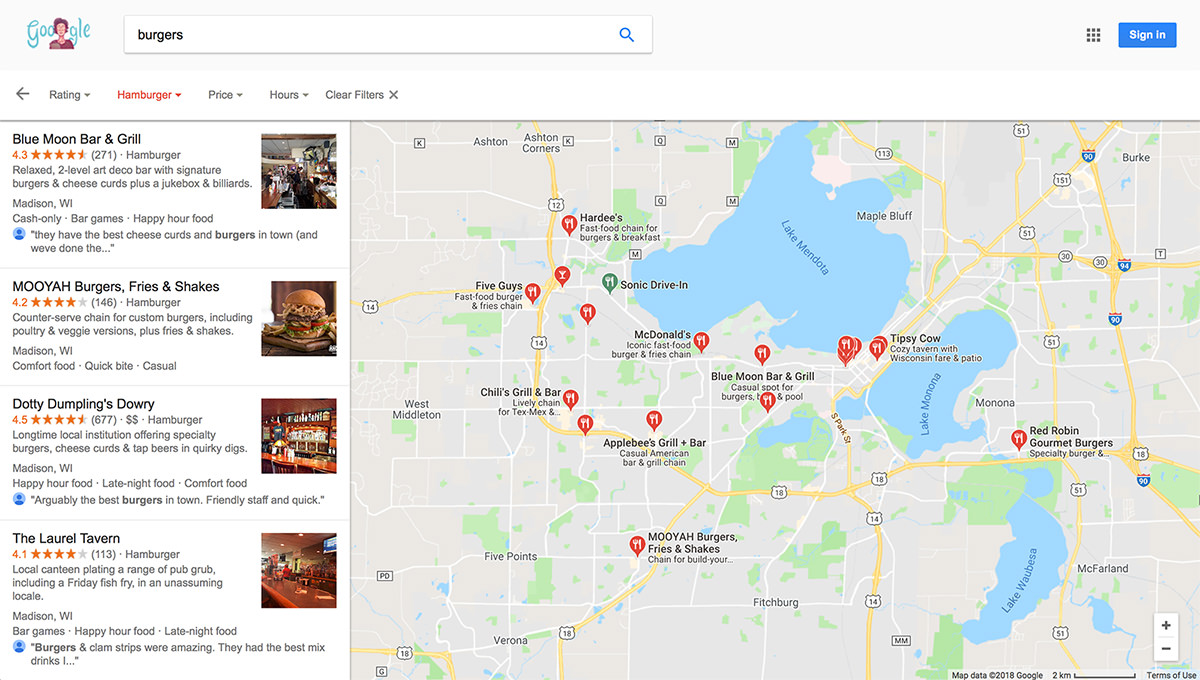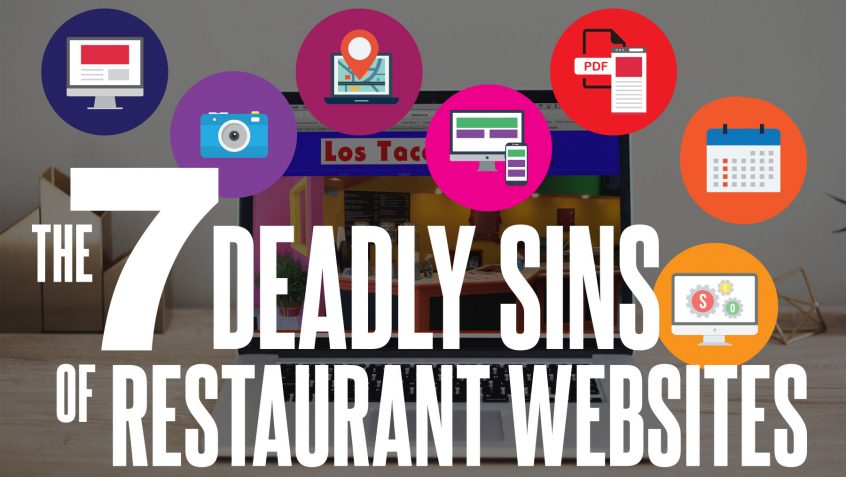Nothing is more important and potentially more effective for marketing your restaurant than a quality website. Many elements go into creating effective restaurant websites, some of them visible, but a few are not. We’ve identified 7 problems we typically encounter with restaurant websites. They’re deadly, they’re sins, and they are surprisingly common. Chances are, your restaurant is committing at least one of these sins right now.
No Website
This has to be the deadliest sin. Too many restaurants are relying on third-party listing sites or delivery services for their online presence. Would you have someone you’ve never met greeting your guests as they entered your restaurant? Of course not. All too often, your restaurant’s first impression is your website. Why would you let someone else control that interaction? It’s a missed opportunity to turn casual browsers into customers.
Having your own site means you choose the best photos of your food and environment and the messaging you convey to the potential customer. It ensures that you make the best impression possible and increases your chances of getting people in the door. If you do not have a website for your restaurant, read this article about why you need to get one.

In addition to the lack of control, sites like Yelp are more than happy to direct potential customers away from your restaurant to other recommendations and even paid ads.
Bad or No Photography
We could write an entire article on this one. Oh, wait… we did. The way food looks is important. If it wasn’t, why would you care how food was arranged on the plate. Before people taste or even smell food, they’ve decided whether they want to eat it based on what it looks like. Bright, clear, professional photos can make a good impression in an instant, while dark, muddy photos make food look unappetizing and will send browsers looking for another restaurant. If you take care of the quality of the food your restaurant serves people won’t believe it unless you take the same care in presenting it. In the case of your website, that means quality photography.

No photography might be preferable to bad photography. Which burger would you like to eat?.
No NAPH
The entire point of your website is to get people to your tables. Making the most important information readily available like your restaurant name, address, and phone number (NAP) is important on even the most basic site. We added the ‘H’ to this standard for hours. Research shows that location and hours are two of the top three things people are looking for when they visit a restaurant’s website (the third is menu). We usually put the NAPH in the footer of the website so it shows up on every page. Not only does it make it easier for customers, it will also help tremendously for your local search results.

The name, address, phone number, and hours in the footer ensures that the information people seek the most is on every page.
Not Mobile-friendly
More and more people are on their phones right now, search for a place to eat. Many restaurants report up to 70% of their web traffic comes from mobile phones. It is absolutely essential that your website is mobile-friendly (or ‘responsive’ in industry terms). A responsive website ensures that browsers have an easy time navigating your website and finding the information they are looking for. NAPH and menus should be easy to find and read no matter what device the browser is on. Google has started placing importance on mobile-friendly sites by penalizing non-responsive sites in search results.
PDF Menu
PDF menus are bad. Period. They require website visitors to download the PDF file before viewing. This takes extra time and is never optimized for the screen the user is viewing the menu on. It is especially bad on mobile phones which require users to enlarge specific areas of the PDF to try to read the menu. Remember, the number one goal of your website is to allow users to find the information they are looking for as quickly and easily as possible. PDF menus are also bad for SEO as most of the content in PDF files are not readable by search engines like Google. For more in-depth info about PDF menus, check out this article.
Outdated Information
Keeping your website up-to-date should be a no-brainer. But, apparently, it’s not. We’ve even seen sites with owner bios that were previous owners who sold the business several years ago. Contact information, specials, menus, and even photography should be kept up to date, but nothing is more important than your hours. It’s not hard to lose customers if your website says you’re open and they show up to find a ‘closed’ sign. Studies show that 65% of people never return after a bad experience. Also, make sure all of your listings like Google My Business page and Yelp page are up to date.
No Basic SEO
In order for people to find your restaurant, you need to have at least some basic SEO (Search Engine Optimization). SEO is a specialty and most designers don’t include extensive SEO. But, like us, many do include the basics. What are those? Glad you asked. Each page should have a title and description relative to the content of the page. If your site is on the WordPress platform (and why wouldn’t it be?) there is a great plug-in called Yoast SEO that makes it easy to write a unique title and description for each page. You can also read our article about optimizing for local SEO.

SEO, especially local SEO makes sure your restaurant is found when people are searching in the area.
Unfortunately, the list goes on for restaurant websites. So, don’t be a sinner. Although, not all of these are quick and easy to fix, if you take care of these 7 mistakes you will be ahead of the majority of your competition.
